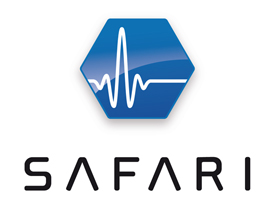
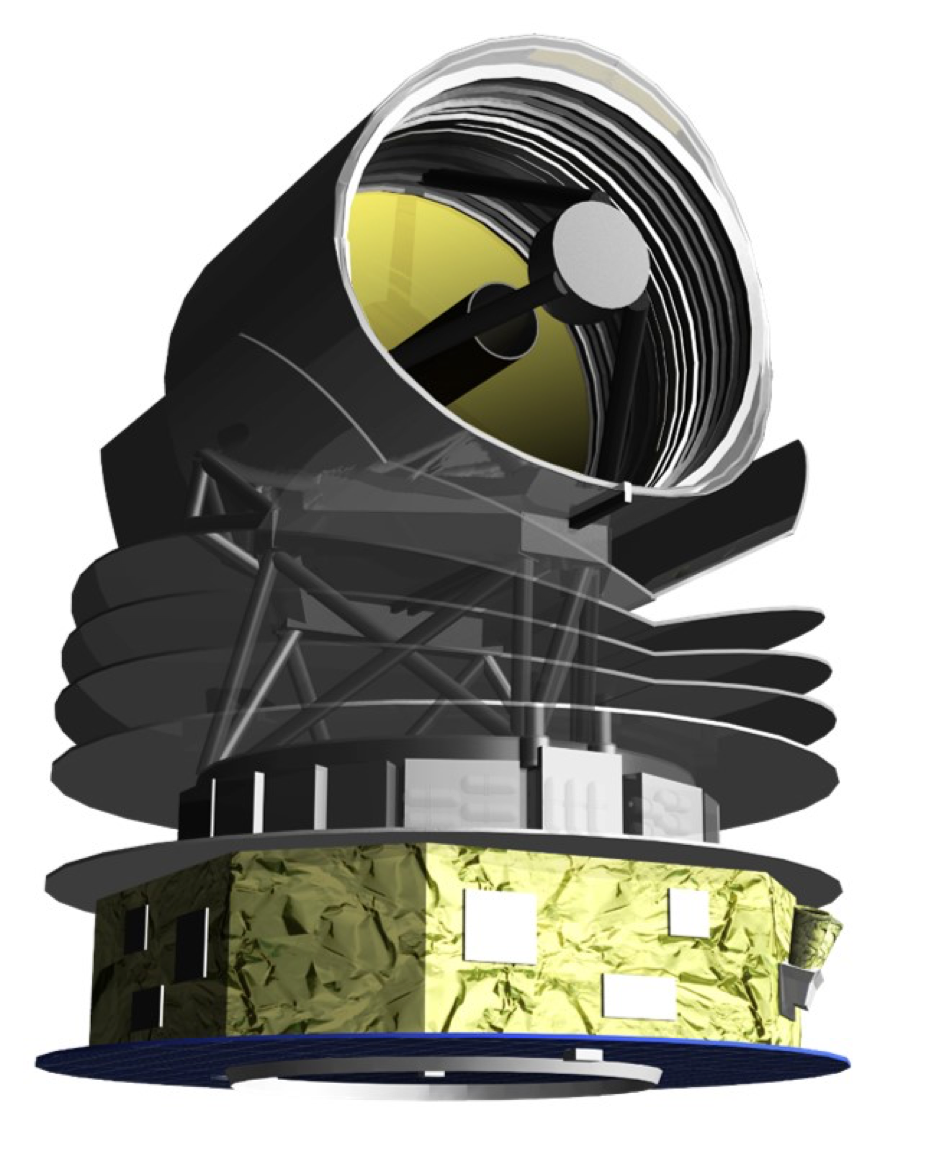
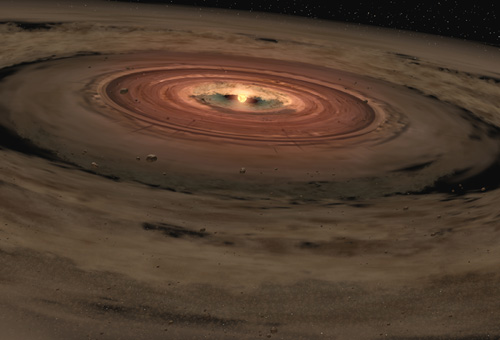
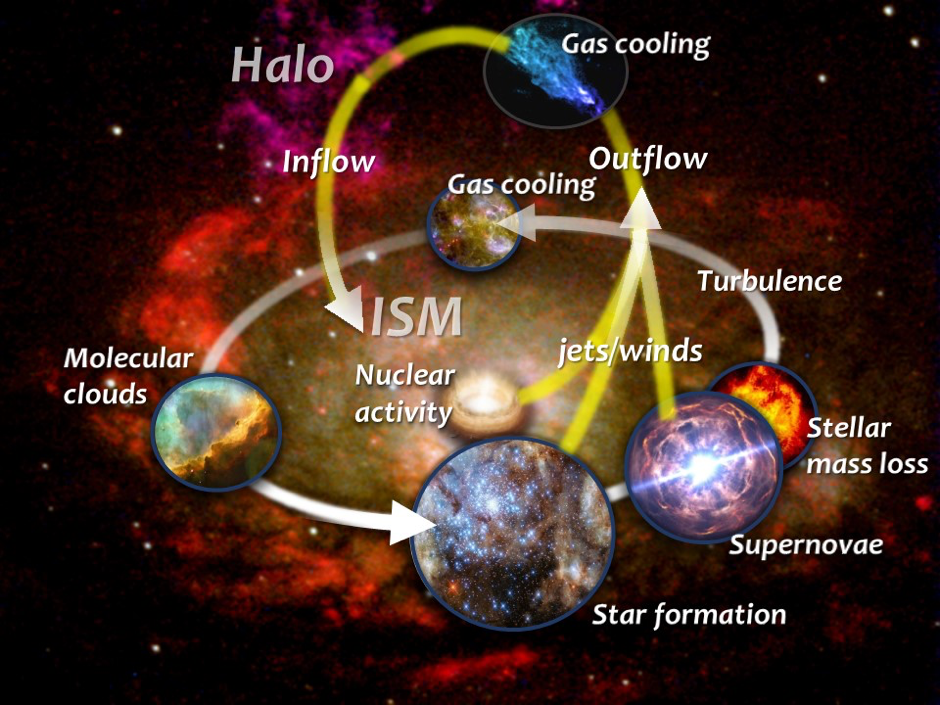
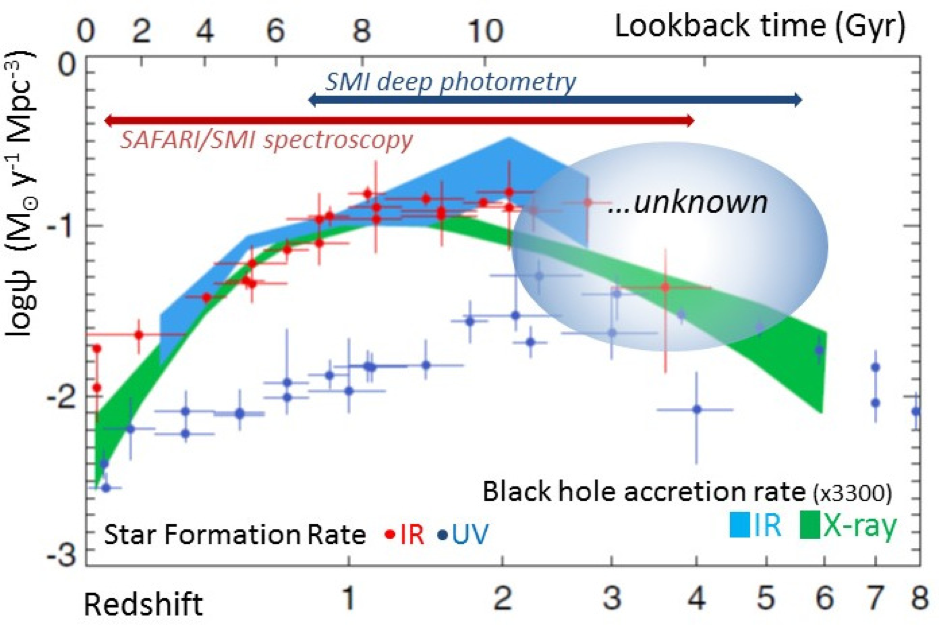


If selected as ESA’s fifth medium class Cosmic Vision mission, SPICA will provide the next step in mid- and far-infrared astronomical research, after the completed Herschel mission. SPICA will be able to detect infrared sources more than two orders of magnitude weaker than Herschel could. The joint European-Japanese space telescope will have a mirror of 2.5 meter in diameter and a total size of 4.5 x 5.9 meter. SPICA will bridge the gap in the electromagnetic spectrum between submillimeter telescopes such as ALMA and optical/near-infrared telescopes such as JWST and ELT.
After its launch around 2030, SPICA (SPace IR telescope for Cosmology and Astrophysics) will be the most sensitive telescope in mid- and far-infrared. This enables astronomers to investigate for example how the first galaxies formed and how this formation rate developed over time. Scientists will also gain knowledge about ice and water vapor in protoplanetary disks. For the past couple of years, a large Japanese/European consortium of scientists and technicians have developed the initial ideas about SPICA into a mission concept that can be implemented within the financial constraints posed by the participating agencies.
On behalf of the SPICA consortium, SRON submitted a proposal in late 2016 in response to ESA’s call for its fifth medium class Cosmic Vision mission (M5). By the end of 2017, ESA selected three missions to be further developed under this call. Following selection into the M5, from early 2018 onwards, the different SPICA instrument teams have significantly stepped up their activities in establishing a full detailed design of the mission and instruments.
SPICA’s largest and most complex instrument is the far-infrared spectrometer SAFARI. Aside from being the applicant on behalf of the entire SPICA consortium, SRON also leads the collaboration of nearly twenty institutes from twelve countries that develop this instrument. SAFARI splits the incoming radiation into different colors using a grating. As a result, the roughly three thousand TES detectors developed by SRON each see a slightly different color. This provides a fingerprint of the chemical composition, temperature and pressure within a galaxy.
Science
By providing access to the mid- and far infrared wavelength domain, SPICA bridges the gap “where astronomy is blind”, between ALMA in the submillimetre domain and optical/near-infrared telescopes such as the James Webb Space Telescope (JWST) and the new generation of Extremely Large Telescopes (ELTs).
The birth and much of the evolution of galaxies, stars and planets occurs in regions that are hidden behind a blanket of dust–virtually inaccessible to the optical instruments that have been the main tools of the trade since the invention of the telescope. Infrared radiation on the other hand is able to penetrate the obscuring clouds. Infrared telescopes can therefore access a vast array of spectral diagnostics both in the local and distant universe.
SPICA will perform spectroscopy in the range of 12-230 µm to reveal the physical processes that govern the formation and evolution of galaxies and black holes over cosmic time. With its 2.5-m mirror actively-cooled to below 8 K, the observatory will allow the first direct spectroscopic determination, in the mid-IR rest-frame, of both the star-formation rate and black hole accretion rate histories of galaxies, reaching lookback times of 12 billion years, for large statistically significant samples.
Densities, temperatures, radiation fields and gas-phase metallicities will be directly measured in dust-obscured galaxies and active galactic nuclei (AGN), sampling a large range in mass and luminosity, from faint local dwarf galaxies to luminous quasars in the distant Universe. AGN and starburst feedback and feeding mechanisms in distant galaxies will be uncovered through detailed measurements of molecular and atomic line profiles. SPICA’s large-area deep spectrophotometric surveys will provide mid-IR spectra and continuum fluxes for unbiased samples of tens of thousands of galaxies, out to redshifts of z~6. SPICA spectroscopy will have the potential to uncover the most luminous galaxies in the first few hundred million years of the Universe, through their characteristic dust and molecular hydrogen features.
A second key objective of SPICA is to further the understanding of the formation and evolution of planetary systems. Planet formation is deeply linked to the evolution of the circumstellar gas reservoir, which can be uniquely traced in planet-forming systems with far-IR observations of the hydrogen deuteride molecule. SPICA will characterize the warm gas disc mass down to the gas dispersal stage. Thanks to SPICA’s mid-IR high spectral resolution capabilities, the gas dispersal in planet-forming systems will be measured using a unique set of molecular/atomic and ionised gas tracers.
Furthermore, SPICA will uniquely probe multiple phases of water (warm and cold vapour, and ice), which cannot be observed from Earth, through the entire planet forming reservoir. The study of water, throughout the evolution of planet-forming systems, will also help us understand the emergence of water in the Solar System and its delivery to the still-forming Earth.
SPICA will furthermore, for the first time, resolve the far-infrared polarization, and therefore the magnetic field, of galactic filaments which play a critical role at the onset of the star-formation process. Additionally, the spectroscopic capabilities of SPICA will shed light on the nature of the turbulent gas and the way in which the compression energy is dissipated through filament and core assembly, providing the experimental basis to advance theories of star formation within molecular clouds.
Technology
SPICA’s two spectroscopic instruments are SAFARI—a joint European-Canadian-US contribution—and SMI from Japan. Together they will provide several modes of operation. SAFARI provides low (R~300) to medium (R up to 11000) resolution spectroscopic capabilities at a uniquely high sensitivity of a few times 10-20 Wm-2 (5σ, 10hr) instantaneously covering the full 35 to 230 μm range. In the 12-18 μm mid-infrared range, SMI provides a high-resolution R~28000 spectroscopy mode, as well as a medium resolution (R~150-1500) capability from 17 to 35 μm. Additionally, SMI provides 10’×12’ wide field imaging in the mid-infrared at 34 μm and POL delivers imaging polarimetry in the far-infrared. The third instrument, BiBoP, provides a small field sensitive polarimetric capability for three bands at 110, 220 and 350 μm.
The SPICA telescope design and manufacture builds directly on the legacy of Herschel, enhancing the mission’s reliability. SRON has been the lead of the SAFARI project, largely based on SRON’s experience in building complex space instruments, and its prominent role in the development of sensitive infrared detectors. Gaining maximum benefit from the low-infrared emission of SPICA’s cooled mirror requires the use of detectors that are several orders of magnitude more sensitive than Herschel’s.
SAFARI differs from Herschel’s HIFI instrument on several aspects. HIFI sees just a small part of the nearby universe, but with a very high spectral resolution. SAFARI is a thousand-fold more sensitive infrared camera with about 4,000 pixels that can instantaneously take fingerprints of the distant universe over a large range of different wavelengths.
Links
Downloads
Contact
Dr. Peter Roelfsema (Principal Investigator SAFARI/Lead SPICA proposer), P.R.Roelfsema@sron.nl, +31 50 363 4043


